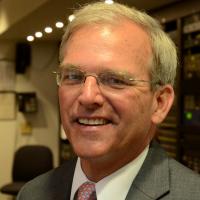June 25, 2020

We have learned a lot about living through a pandemic over the past four months. Our best weapons for combatting a rapid spread of the virus in Massachusetts remain wearing masks, hand washing, and social distancing. These require a change in human behavior for all residents. Why? Because it saves lives.
While virologists were banging a warning drum, the US mostly ignored the threat until the coronavirus hit hard and suddenly in March. Our federal, state, and local governments were slow to act at first, seemingly not understanding how rapidly the virus spreads. The result was a far wider spread of the virus, and, according to a study by Columbia University, an estimated 36,000 deaths that would not have occurred had we acted just a week earlier in imposing mitigating measures such as social distancing.
There was a great fear that our health care system would be overwhelmed, but in the end, it wasn’t because enough people in our Commonwealth finally listened to leadership and started wearing masks, washing their hands regularly, and practicing social distancing. Eventually masks were seen on two-thirds of the faces in public areas and they are required to be worn to enter a business across the state.
At this point, with decreasing numbers of deaths and cases, it seems that Massachusetts has gotten control of the virus. Rules implemented to stop its spread continue to be relaxed, and this week the state allowed restaurants to reopen for indoor dining, provided the tables are six feet apart and have no more than six people at any one of them. Offices can get back to 50 percent capacity, and nail salons and massage and tattoo parlors are back in business.
This would be great news, except for the fact that the virus has not gone away, nor does it seem it will be going away anytime soon. It’s not even decreasing.
Nationally, cases in the US are up over 20 percent in June, after falling in May. During the April surge, the US had an average of about 30,000 new cases per day. Last Saturday, there were 36,617.
The reason for this surge is the reopening in other states. If we were, say, New Zealand, and could control our borders, this would not be a cause for alarm. But we don’t have an ability to prevent people from coming into our state, and we are only recommending (as the signs say) that people coming into Massachusetts “QRNTINE for 14 days.”
Public health officials recommend that massive and regular testing be the method by which we control the virus. But Massachusetts decided for financial reasons not to do massive and regular testing, which would identify newly infected people, including asymptomatic carriers of the disease, and require quarantining and contact tracing as a way to prevent the spread of the virus. Instead, our governor and health officials decided to reopen the state based on a continuing downward trend in cases.
While this is a cheaper alternative, with upwards of 25 percent of those with the virus being asymptomatic, not testing everyone has some unfortunate side effects. For examples: Elderly people who want to avoid getting the virus will not be able to join the reopened economy; it makes unlikely the chance of reopening schools in September; and it creates a higher likelihood of a new surge in cases.
The state and city could mitigate the chances of a new surge if they demanded and enforced social distancing and mask wearing, but they aren’t doing so, and the result is a dramatic decrease in both. Last week, a ride down the Neponset River trail showed 59 people wearing masks and 139 not wearing one. Local stores all have signs saying that customers cannot enter without mask, but it appears that there is little enforcement of this rule. Municipal employees, including police officers, are seldom seen wearing masks. When we can’t even get our own city employees to wear masks, it shows the rest of the community that our leaders are not taking virus prevention seriously.
Meanwhile, study after study shows that mask-wearing is effective in containing the virus. Dr. Atul Gawande, the famous Brigham and Women’s Hospital physician, tweeted recently: “Remember the 2 MO hairstylists who saw 140 clients over 8 days while infected with COVID but everyone had worn masks? Contact tracers found ZERO secondary infections. More evidence that masks work.”
Waiting for a new outbreak to tell people that the new normal should be social distancing and wearing masks makes no sense. It doesn’t cost anything for people to wear face coverings or practice social distancing, and failure to promote and enforce them just keeps many people, especially the millions in risk groups, from participating in the reopened economy.
As Boston Federal Reserve head Eric Rosengren recently said at a New England Council forum: “We need to have people in risk groups to feel safe coming out to have a fully restored economy.” Knowing how quickly the virus can spread, as a person over 60, therefore in a risk group, I won’t be fully participating in our state’s reopening.
Without massive testing, the best we can do to prevent or limit the next surge is for the state and city to start enforcing social distancing and facial coverings. We need a public health campaign to make it socially unacceptable to not wear a mask (think smoking). We need to penalize businesses that fail to enforce the mask requirement and social distancing. And we need government to set the tone by insisting that our public employees wear masks when working in public areas.
Things are going well right now, but we’re playing Russian roulette if our leaders allow people to think we’re out of the woods. Let’s not unlearn what worked in the first four months of the pandemic.
Bill Walczak lives in Dorchester and is the former CEO of Codman Square Health Center, which he co-founded. His column appears weekly in the Reporter.


